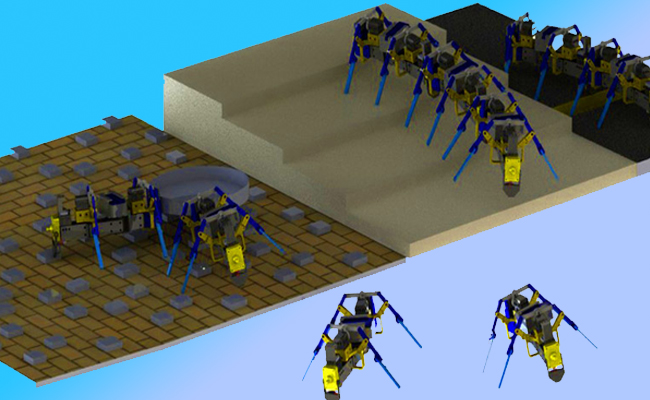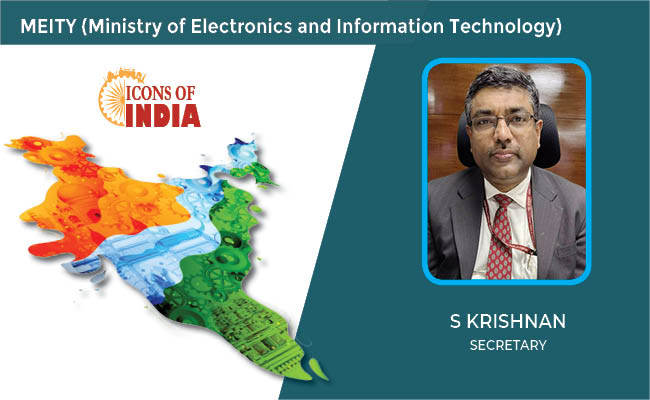Four-legged swarm robots using 3D printer built by US Researchers
By MYBRANDBOOK

A research published in Science Robotics by Yasemin Ozkan-Aydin, Assistant Professor of Electrical Engineering at the University of Notre Dame presents how she was able to build multi-legged robots capable of maneuvering in challenging environments and accomplishing difficult tasks collectively, mimicking their natural-world counterparts. The collective behavior of ants, honeybees and birds to solve problems and overcome obstacles, is something researchers have developed in aerial and underwater robotics. Developing small-scale swarm robots with the capability to traverse complex terrain, however, comes with a unique set of challenges.
Ozkan-Aydin said she hypothesized that a physical connection between individual robots could enhance the mobility of a terrestrial legged collective system. Individual robots performed simple or small tasks such as moving over a smooth surface or carrying a light object, but if the task was beyond the capability of the single unit, the robots physically connected to each other to form a larger multi-legged system and collectively overcome issues.
Ozkan-Aydin said, “Legged robots can navigate challenging environments such as rough terrain and tight spaces, and the use of limbs offers effective body support, enables rapid maneuverability and facilitates obstacle crossing. However, legged robots face unique mobility challenges in terrestrial environments, which results in reduced locomotor performance. When ants collect or transport objects, if one comes upon an obstacle, the group works collectively to overcome that obstacle. If there’s a gap in the path, for example, they will form a bridge so the other ants can travel across - and that is the inspiration for this study. Through robotics we’re able to gain a better understanding of the dynamics and collective behaviors of these biological systems and explore how we might be able to use this kind of technology in the future.”
Using a 3D printer, Ozkan-Aydin built four-legged robots measuring 15 to 20 centimeters, or roughly 6 to 8 inches, in length. Each was equipped with a lithium polymer battery, microcontroller and three sensors - a light sensor at the front and two magnetic touch sensors at the front and back, allowing the robots to connect to one another. Four flexible legs reduced the need for additional sensors and parts and gave the robots a level of mechanical intelligence, which helped when interacting with rough or uneven terrain.
Ozkan-Aydin began her research for the study in early 2020, when much of the country was shut down due to the COVID-19 pandemic. After printing each robot, she built each one and conducted her experiments at home, in her yard or at the playground with her son. The robots were tested over grass, mulch, leaves and acorns. Flat-ground experiments were conducted over particle board, and she built stairs using insulation foam. The robots were also tested over shag carpeting, and rectangular wooden blocks were glued to particle board to serve as rough terrain.
When an individual unit became stuck, a signal was sent to additional robots, which linked together to provide support to successfully traverse obstacles while working collectively.
Ozkan-Aydin says there are still improvements to be made on her design. But she expects the study’s findings will inform the design of low-cost legged swarms that can adapt to unforeseen situations and perform real-world cooperative tasks such as search-and-rescue operations, collective object transport, space exploration and environmental monitoring. Her research will focus on improving the control, sensing and power capabilities of the system, which are essential for real-world locomotion and problem-solving - and she plans to use this system to explore the collective dynamics of insects such as ants and termites.


Nazara and ONDC set to transform in-game monetization with ‘
Nazara Technologies has teamed up with the Open Network for Digital Comme...

Jio Platforms and NICSI to offer cloud services to government
In a collaborative initiative, the National Informatics Centre Services In...

BSNL awards ₹5,000 Cr Project to RVNL-Led Consortium
A syndicate led by Rail Vikas Nigam Limited (abbreviated as RVNL), along wi...

Pinterest tracks users without consent, alleges complaint
A recent complaint alleges that Pinterest, the popular image-sharing platf...


ICONS OF INDIA : S KRISHNAN
S Krishnan as the secretary for the electronics and information techno...

ICONS OF INDIA : RAMESH NATRAJAN
Ramesh Natarajan, CEO of Redington Limited, on overcoming ‘technolog...

ICONS OF INDIA : SUNIL VACHANI
Sunil Vachani is the Chairman of Dixon Technologies (India) Ltd. Under...


TCIL - Telecommunications Consultants India Limited
TCIL is a government-owned engineering and consultancy company...

RailTel Corporation of India Limited
RailTel is a leading telecommunications infrastructure provider in Ind...

IOCL - Indian Oil Corporation Ltd.
IOCL is India’s largest oil refining and marketing company ...


Indian Tech Talent Excelling The Tech World - Dheeraj Pandey, CEO, DevRev
Dheeraj Pandey, Co-founder and CEO at DevRev , has a remarkable journe...

Indian Tech Talent Excelling The Tech World - NEAL MOHAN, CEO - Youtube
Neal Mohan, the CEO of YouTube, has a bold vision for the platform’s...

Indian Tech Talent Excelling The Tech World - Rajiv Ramaswami, President & CEO, Nutanix Technologies
Rajiv Ramaswami, President and CEO of Nutanix, brings over 30 years of...